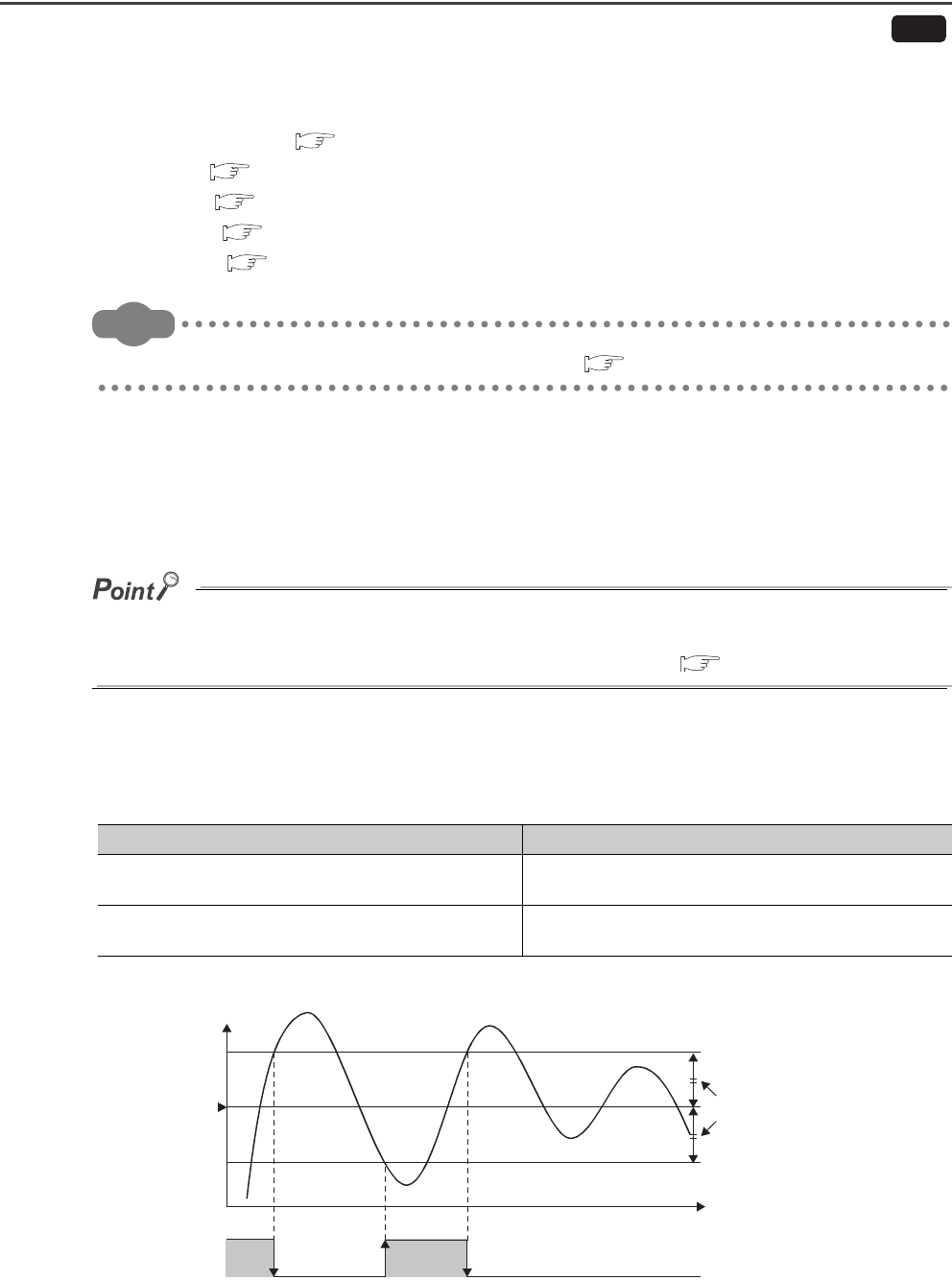
166
4.3 Control Method
The following control methods can be applied by setting the proportional band (P), integral time, and derivative
time(D).
• Two-position control ( Page 166, Section 4.3 (1))
• P control ( Page 168, Section 4.3 (2))
• PI control ( Page 169, Section 4.3 (3))
• PD control ( Page 169, Section 4.3 (4))
• PID control ( Page 169, Section 4.3 (5))
Remark
For P control and PD control, the manual reset function is activated. ( Page 173, Section 4.4)
(1) Two-position control
Two-position control is a control method that uses 0% manipulated value (MV) and 100% manipulated value
(MV). Turning on and off the manipulated value (MV) repeatedly, the temperature process value comes close to
the set value (SV), then is kept constant.
By the setting in CH Adjustment sensitivity (dead band) setting (Un\G46, Un\G78, Un\G110, Un\G142) the chattering of
transistor output under two-position control can be prevented. Set a dead band toward the set value (SV) in CH
Adjustment sensitivity (dead band) setting (Un\G46, Un\G78, Un\G110, Un\G142). ( Page 113, Section 3.4.2 (22))
(a) Standard control
The module operates as follows outside the range of CH Adjustment sensitivity (dead band) setting (Un\G46,
Un\G78, Un\G110, Un\G142).
Condition Transistor output status
The temperature process value (PV) is below the lower limit
of the adjustment sensitivity (dead band).
ON
The temperature process value (PV) is above the upper limit
of the adjustment sensitivity (dead band).
OFF
Common
Temperature
process value (PV)
Time
Adjustment sensitivity
(dead band)
Transistor
output
Set value (SV)
OFF
ON


















